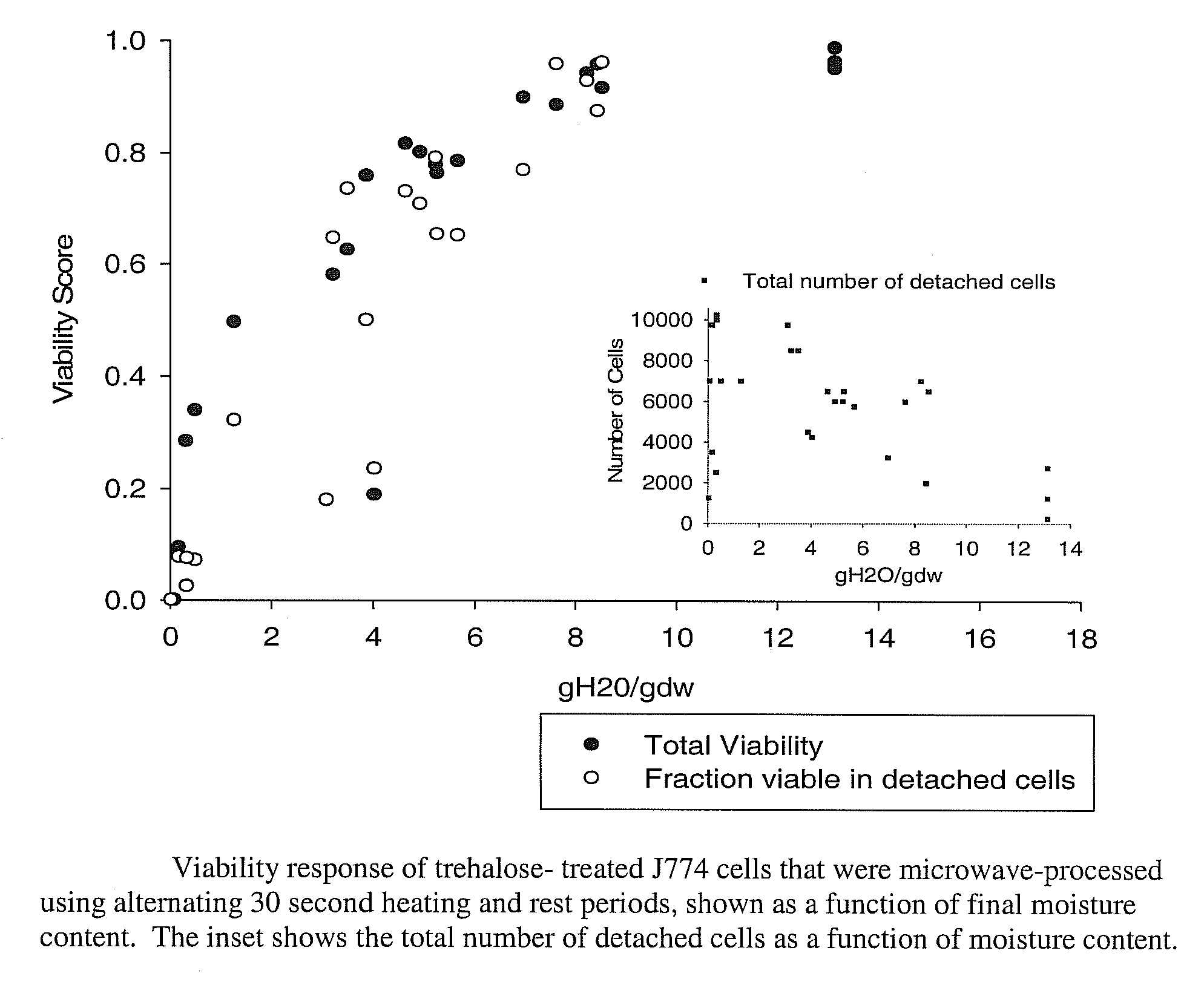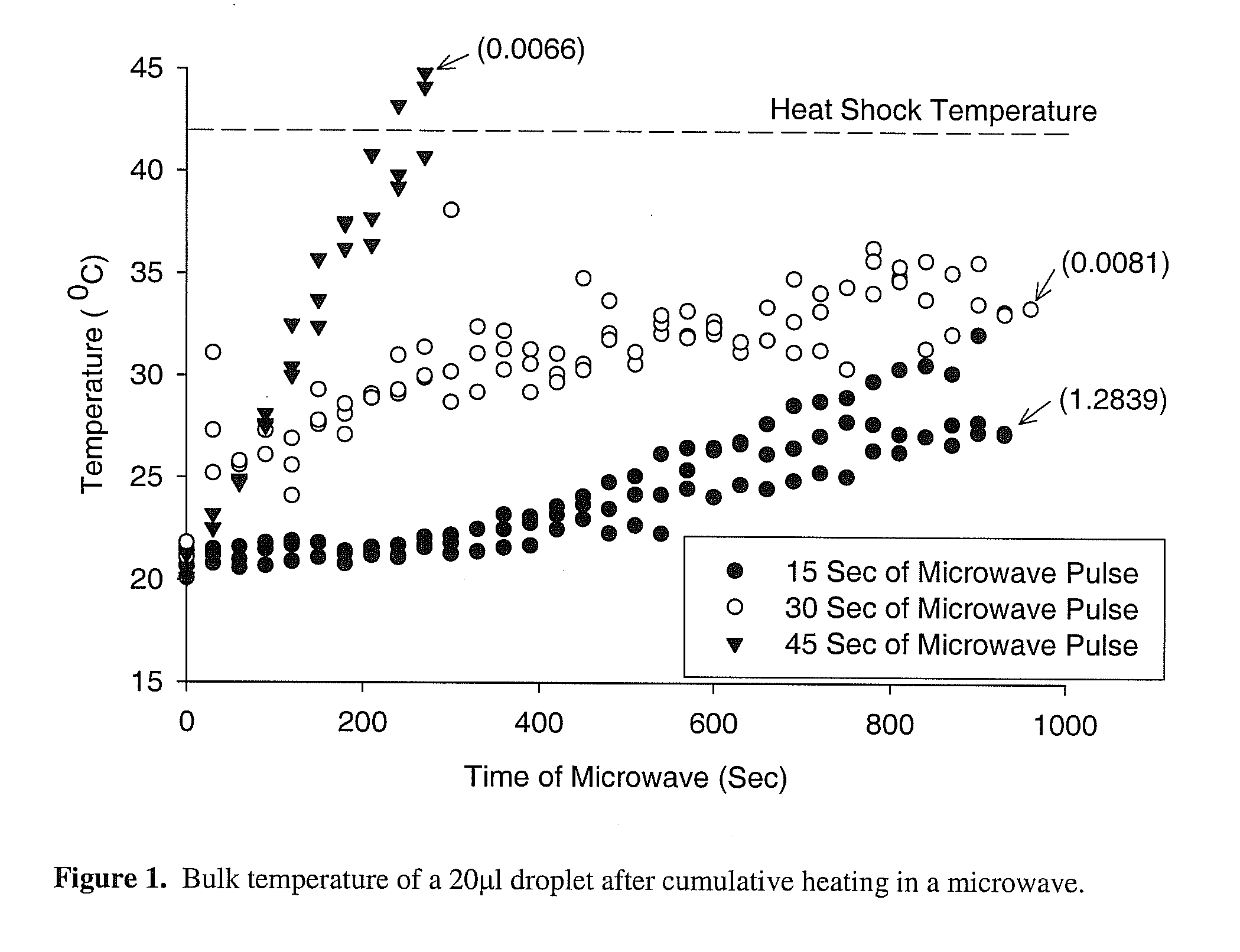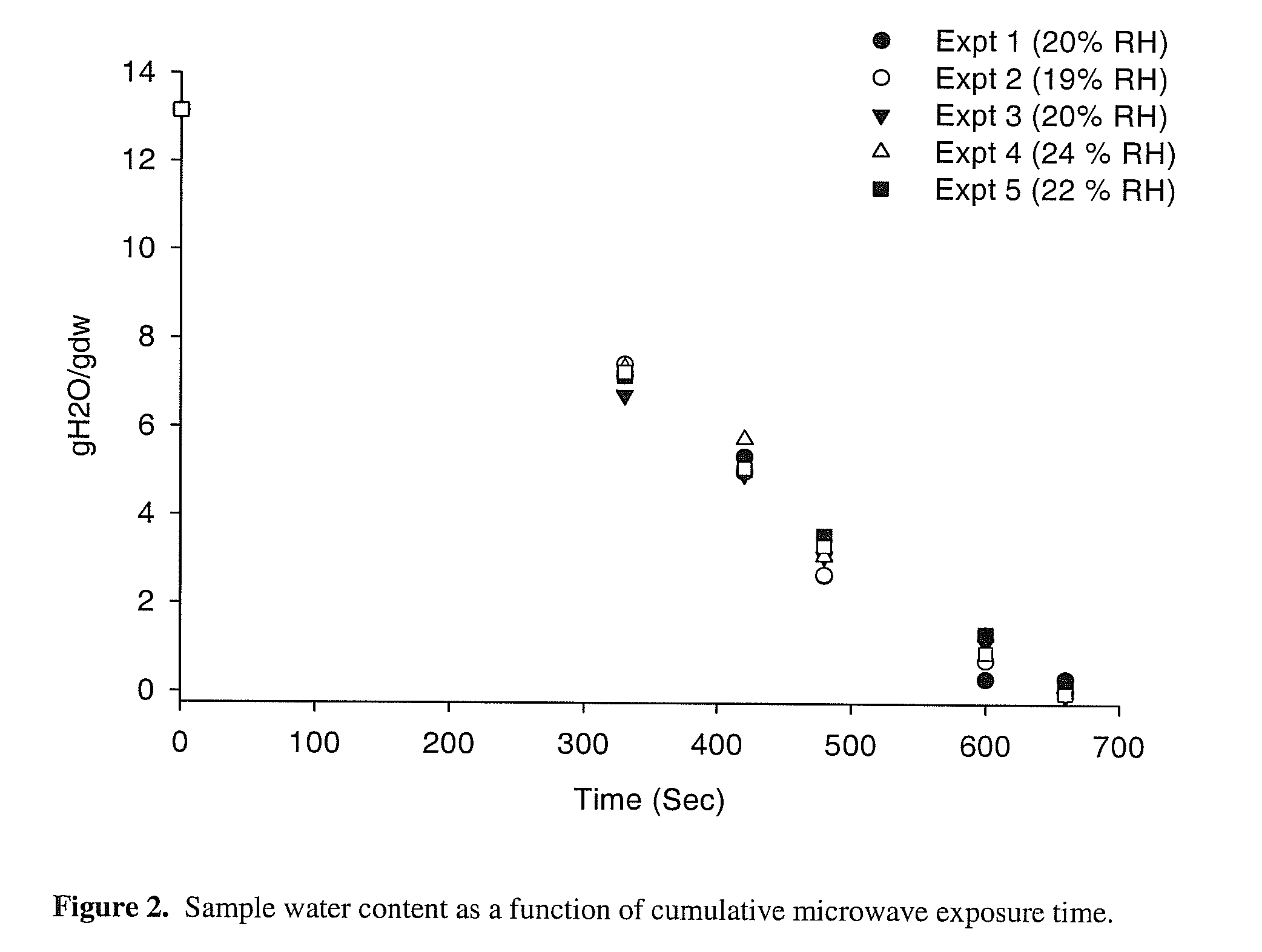Microwave drying process for vitrification of biologics
a technology of biologics and microwaves, applied in the field of vitrification composition, can solve the problems of limiting the transportation of biological materials, high cost of cryo-preservation, and affecting the effect of biological material transportation
- Summary
- Abstract
- Description
- Claims
- Application Information
AI Technical Summary
Problems solved by technology
Method used
Image
Examples
example summary
[0038]Cell Culture: J774.A1 mouse macrophage cells were obtained from American Type Culture Collection (Manassas, Va.). Cultures were maintained at 37° C., 10% CO2-90% air in cell culture media consisting of Dulbecco's Modified Eagle Medium (DMEM) with 4.5 g / L glucose (Mediatech Inc, Herndon, Va.), 10% fetal bovine serum (FBS; Mediatech Inc, Herndon, Va.) and 1% 5000 I.U. Penicillin, and 5000 μg / ml Streptomycin solution (Mediatech Inc, Herndon, Va.). Cells were first cultured in 25 cm2 cell culture T-flasks (Corning Incorporated, N.Y.) for 3 days. As cells neared confluence they were detached from flasks by scraping and then transferred into 50 ml spinner culture flasks (Wheaton Millville, N.J.). All cells used for experiments were taken from established spinner flask cultures that were maintained at a density of less than 1×106 cells / ml.
[0039]Trehalose Loading and Detection: Macrophage cells have the capacity to take up solutes from the extracellular milieu by fluid phase endocytos...
example 1
Control Cells Dried in Isotonic Trehalose Solution
[0056]Cell culture. Mouse macrophage cells were obtained from American Type Culture Collection (Manassas, Va.). Cultures were maintained at 37° C., 10% CO2-90% air in cell culture media consisting of Dulbecco's modified Eagle medium (DMEM) with 4.5 g / L glucose (Mediatech Inc, Herndon, Va.), 10% fetal bovine serum (FBS; Mediatech Inc, Herndon, Va.) and 1% 5000 I.U. Penicillin & 5000 ug / ml Streptomycin solution (Mediatech Inc, Herndon, Va.). Cells were first cultured in 25 cm2 cell culture T-flasks (Corning Incorporated, N.Y.) for 3 days. As cells neared confluence they were detached from the flasks by scraping and then transferred into 50 ml spinner culture flasks (Wheaton Millville, N.J.). An aliquot of cells was taken from an established spinner flask cultures that was maintained at a density of less than 1×106 cells / ml.
[0057]Cell Processing. An aliquot of 5 ml of cell suspension was collected from spinner flask culture and centrifu...
example 2
Trehalose Pre-Treated Cells Dried in Isotonic Trehalose Solution
[0060]Cell culture. Same as Example 1
[0061]Cell Processing. Mouse macrophage cells were incubated overnight in full complement media containing trehalose at a concentration of 50 mM. Cells were found to load trehalose at a concentration of 160±50 mM (standard error), some of which was expected to be distributed in the cytoplasm. Cells were then dried to a final moisture content of 4.258 gH20 / gdw using the processing method of Example 1.
[0062]Cell Drying. Same as Example 1
[0063]Cell Survival The method for assessing cell viability was the same as in Example 1. The percentage of cells that were viable after processing to 4.258 gH20 / gdw was approximately 70%.
[0064]Cell growth: Long term viability of the microwave processed cells was determined using a metabolic assay based on the reduction of resazurin. The blue and non-fluorescent dye resazurin is reduced to pink and highly fluorescent resorufin by the metabolic activity ...
PUM
| Property | Measurement | Unit |
|---|---|---|
| temperature | aaaaa | aaaaa |
| time | aaaaa | aaaaa |
| temperature | aaaaa | aaaaa |
Abstract
Description
Claims
Application Information
 Login to View More
Login to View More - R&D
- Intellectual Property
- Life Sciences
- Materials
- Tech Scout
- Unparalleled Data Quality
- Higher Quality Content
- 60% Fewer Hallucinations
Browse by: Latest US Patents, China's latest patents, Technical Efficacy Thesaurus, Application Domain, Technology Topic, Popular Technical Reports.
© 2025 PatSnap. All rights reserved.Legal|Privacy policy|Modern Slavery Act Transparency Statement|Sitemap|About US| Contact US: help@patsnap.com



